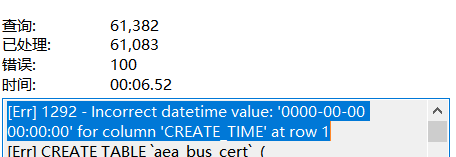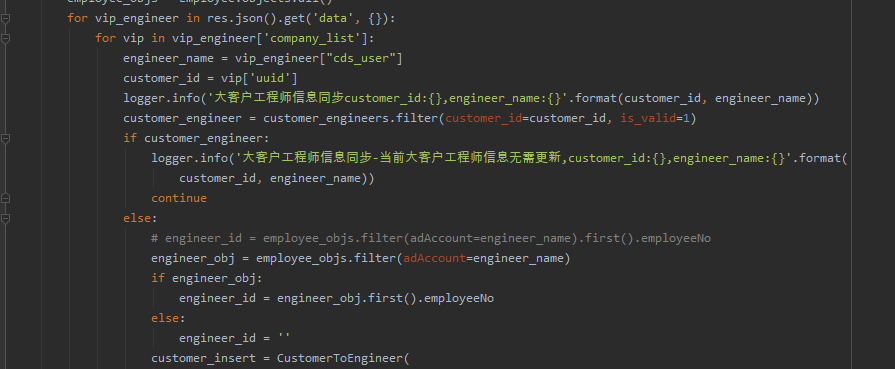#!/usr/bin/env python
import pika
import json
from callback import callback
class RabbitQueue:
def __init__(self):
self.channel = None
def connect(self):
credit = pika.PlainCredentials(username='admin', password='admin')
self.channel = pika.BlockingConnection(pika.ConnectionParameters(host='192.168.3.19', port=5672, credentials=credit)).channel()
@staticmethod
def callback(channel, method, properties, body):
"""callback函数需要自定义:返回结果:body为消息队列获取结果"""
receive = body.decode()
print(channel.__dict__)
print(receive)
print(method)
print(properties)
channel.basic_ack(delivery_tag=method.delivery_tag)
def image_enqueue(self, queue_name, image_list):
"""推送数据至Rabbitmq消息队列"""
self.connect()
channel = self.channel
channel.queue_declare(queue=queue_name, durable=True) # 声明RPC请求队列,durable=True队列持久化
channel.basic_publish(
exchange='',
routing_key=queue_name,
body=json.dumps(image_list, ensure_ascii=False),
properties=pika.BasicProperties(
delivery_mode=2, # 消息持久化
)
)
channel.close()
def bpop_queue(self, queue_name, timeout=0):
"""从消息队列获取数据"""
self.connect()
channel = self.channel
channel.queue_declare(queue=queue_name, durable=True)
# 需要自定义callback函数
channel.basic_consume(on_message_callback=callback, queue=queue_name, auto_ack=False)
channel.start_consuming()
if __name__ == '__main__':
obj = RabbitQueue()
obj.image_enqueue(queue_name='_device_image_', image_list='hello world')
obj.bpop_queue(queue_name='_device_image_') # 阻塞等待
简单模式:
# #########################基于简单模式的 生产者 #########################
#!/usr/bin/env python
import pika
# 封装 socket通信实现
connection = pika.BlockingConnection(pika.ConnectionParameters(host='192.168.253.128',port=5672))
# 创建通道对象
channel = connection.channel()
# 创建一个队列:名字是hello
channel.queue_declare(queue='hello')
# 向队列hello里丢东西
channel.basic_publish(exchange='',
routing_key='hello',
body='Hello World!')
print(" [x] Sent 'Hello World!'")
connection.close()
# ##########################基于简单模式的 消费者 ##########################
import pika
connection = pika.BlockingConnection(pika.ConnectionParameters(host='192.168.253.128',port=5672))
channel = connection.channel()
channel.queue_declare(queue='hello')
def callback(ch, method, properties, body):
print(" [x] Received %r" % body)
# 如果能从hello这个队列获取到数据就执行callback,否则继续往下走
channel.basic_consume(callback,
queue='hello',
no_ack=True)no_ack参数:如果为False,当消费者服务器挂掉了,那么rabbitmq会重新将该任务添加到任务队列中
print(' [*] Waiting for messages. To exit press CTRL+C')
channel.start_consuming()
此时服务端的代码可以这么写:
import pika
connection = pika.BlockingConnection(pika.ConnectionParameters(
host='10.211.55.4'))
channel = connection.channel()
channel.queue_declare(queue='hello')
def callback(ch, method, properties, body):
print(" [x] Received %r" % body)
import time
time.sleep(10)
print 'ok'
ch.basic_ack(delivery_tag = method.delivery_tag)
channel.basic_consume(callback,
queue='hello',
no_ack=False)
print(' [*] Waiting for messages. To exit press CTRL+C')
channel.start_consuming()
durable模式:信息不丢失
# 生产者
#!/usr/bin/env python
import pika
connection = pika.BlockingConnection(pika.ConnectionParameters(host='10.211.55.4'))
channel = connection.channel()
# make message persistent
channel.queue_declare(queue='hello', durable=True)
channel.basic_publish(exchange='',
routing_key='hello',
body='Hello World!',
properties=pika.BasicProperties(
delivery_mode=2, # make message persistent
))
print(" [x] Sent 'Hello World!'")
connection.close()
# 消费者
#!/usr/bin/env python
# -*- coding:utf-8 -*-
import pika
connection = pika.BlockingConnection(pika.ConnectionParameters(host='10.211.55.4'))
channel = connection.channel()
# make message persistent
channel.queue_declare(queue='hello', durable=True)
def callback(ch, method, properties, body):
print(" [x] Received %r" % body)
import time
time.sleep(10)
print 'ok'
ch.basic_ack(delivery_tag = method.delivery_tag)
channel.basic_consume(callback,
queue='hello',
no_ack=False)
print(' [*] Waiting for messages. To exit press CTRL+C')
channel.start_consuming()
消息获取顺序
默认消息队列里的数据是按照顺序被消费者拿走,例如:消费者1 去队列中获取 奇数 序列的任务,消费者2去队列中获取 偶数 序列的任务。
channel.basic_qos(prefetch_count=1) 表示谁来谁取,不再按照奇偶数排列
enchange模型
一、发布订阅模式(fanout)
发布订阅和简单的消息队列区别在于,发布订阅会将消息发送给所有的订阅者,而消息队列中的数据被消费一次便消失。所以,RabbitMQ实现发布和订阅时,会为每一个订阅者创建一个队列,而发布者发布消息时,会将消息放置在所有相关队列中。
# 生产者
#!/usr/bin/env python
import pika
import sys
connection = pika.BlockingConnection(pika.ConnectionParameters(
host='localhost'))
channel = connection.channel()
channel.exchange_declare(exchange='logs',
exchange_type='fanout')
message = ' '.join(sys.argv[1:]) or "info: Hello World!"
channel.basic_publish(exchange='logs',
routing_key='',
body=message)
print(" [x] Sent %r" % message)
connection.close()
# 消费者
#!/usr/bin/env python
import pika
connection = pika.BlockingConnection(pika.ConnectionParameters(
host='localhost'))
channel = connection.channel()
channel.exchange_declare(exchange='logs',
exchange_type='fanout')
result = channel.queue_declare(exclusive=True)
queue_name = result.method.queue
channel.queue_bind(exchange='logs',
queue=queue_name)
print(' [*] Waiting for logs. To exit press CTRL+C')
def callback(ch, method, properties, body):
print(" [x] %r" % body)
channel.basic_consume(callback,
queue=queue_name,
no_ack=True)
channel.start_consuming()
二、关键字模式(direct)
之前事例,发送消息时明确指定某个队列并向其中发送消息,RabbitMQ还支持根据关键字发送,即:队列绑定关键字,发送者将数据根据关键字发送到消息exchange,exchange根据 关键字 判定应该将数据发送至指定队列。
#!/usr/bin/env python
import pika
import sys
connection = pika.BlockingConnection(pika.ConnectionParameters(
host='localhost'))
channel = connection.channel()
channel.exchange_declare(exchange='direct_logs',
exchange_type='direct')
result = channel.queue_declare(exclusive=True)
queue_name = result.method.queue
severities = sys.argv[1:]
if not severities:
sys.stderr.write("Usage: %s [info] [warning] [error]\n" % sys.argv[0])
sys.exit(1)
for severity in severities:
channel.queue_bind(exchange='direct_logs',
queue=queue_name,
routing_key=severity)
print(' [*] Waiting for logs. To exit press CTRL+C')
def callback(ch, method, properties, body):
print(" [x] %r:%r" % (method.routing_key, body))
channel.basic_consume(callback,
queue=queue_name,
no_ack=True)
channel.start_consuming()
三、模糊匹配(topic)
在topic类型下,可以让队列绑定几个模糊的关键字,之后发送者将数据发送到exchange,exchange将传入”路由值“和 ”关键字“进行匹配,匹配成功,则将数据发送到指定队列。
#!/usr/bin/env python
import pika
import sys
connection = pika.BlockingConnection(pika.ConnectionParameters(
host='localhost'))
channel = connection.channel()
channel.exchange_declare(exchange='topic_logs',
exchange_type='topic')
result = channel.queue_declare(exclusive=True)
queue_name = result.method.queue
binding_keys = sys.argv[1:]
if not binding_keys:
sys.stderr.write("Usage: %s [binding_key]...\n" % sys.argv[0])
sys.exit(1)
for binding_key in binding_keys:
channel.queue_bind(exchange='topic_logs',
queue=queue_name,
routing_key=binding_key)
print(' [*] Waiting for logs. To exit press CTRL+C')
def callback(ch, method, properties, body):
print(" [x] %r:%r" % (method.routing_key, body))
channel.basic_consume(callback,
queue=queue_name,
no_ack=True)
channel.start_consuming()
基于rabbitmq的RPC
#!/usr/bin/env python 服务端
import pika
# 建立连接,服务器地址为localhost,可指定ip地址
connection = pika.BlockingConnection(pika.ConnectionParameters(
host='192.168.253.128', port=5672))
# 建立会话
channel = connection.channel()
# 声明RPC请求队列
channel.queue_declare(queue='rpc_queue')
# 数据处理方法
def fib(n):
if n == 0:
return 0
elif n == 1:
return 1
else:
return fib(n - 1) + fib(n - 2)
# 对RPC请求队列中的请求进行处理
def on_request(ch, method, props, body):
n = int(body)
print(" [.] fib(%s)" % n)
# 调用数据处理方法
response = fib(n)
# 将处理结果(响应)发送到回调队列
ch.basic_publish(exchange='',
routing_key=props.reply_to,
properties=pika.BasicProperties(correlation_id= \
props.correlation_id),
body=str(response))
ch.basic_ack(delivery_tag=method.delivery_tag)
# 负载均衡,同一时刻发送给该服务器的请求不超过一个
channel.basic_qos(prefetch_count=1)
channel.basic_consume(on_request, queue='rpc_queue')
print(" [x] Awaiting RPC requests")
channel.start_consuming()
#!/usr/bin/env python
import pika
import uuid
class FibonacciRpcClient(object):
def __init__(self):
# 建立连接,指定服务器的ip地址
self.connection = pika.BlockingConnection(pika.ConnectionParameters(
host='192.168.253.128', port=5672))
# 建立一个会话,每个channel代表一个会话任务
self.channel = self.connection.channel()
# 声明回调队列,再次声明的原因是,服务器和客户端可能先后开启,该声明是幂等的,多次声明,但只生效一次
result = self.channel.queue_declare(exclusive=True)
# 将次队列指定为当前客户端的回调队列
self.callback_queue = result.method.queue
# 客户端订阅回调队列,当回调队列中有响应时,调用`on_response`方法对响应进行处理;
self.channel.basic_consume(self.on_response, no_ack=True,
queue=self.callback_queue)
# 对回调队列中的响应进行处理的函数
def on_response(self, ch, method, props, body):
if self.corr_id == props.correlation_id:
self.response = body
# 发出RPC请求
def call(self, n):
# 初始化 response
self.response = None
# 生成correlation_id
self.corr_id = str(uuid.uuid4())
# 发送RPC请求内容到RPC请求队列`rpc_queue`,同时发送的还有`reply_to`和`correlation_id`
self.channel.basic_publish(exchange='',
routing_key='rpc_queue',
properties=pika.BasicProperties(
reply_to=self.callback_queue,
correlation_id=self.corr_id,
),
body=str(n))
while self.response is None:
self.connection.process_data_events()
return int(self.response)
# 建立客户端
fibonacci_rpc = FibonacciRpcClient()
# 发送RPC请求
print("开始发送数据")
response = fibonacci_rpc.call(30)
print(" [.] Got %r" % response)













